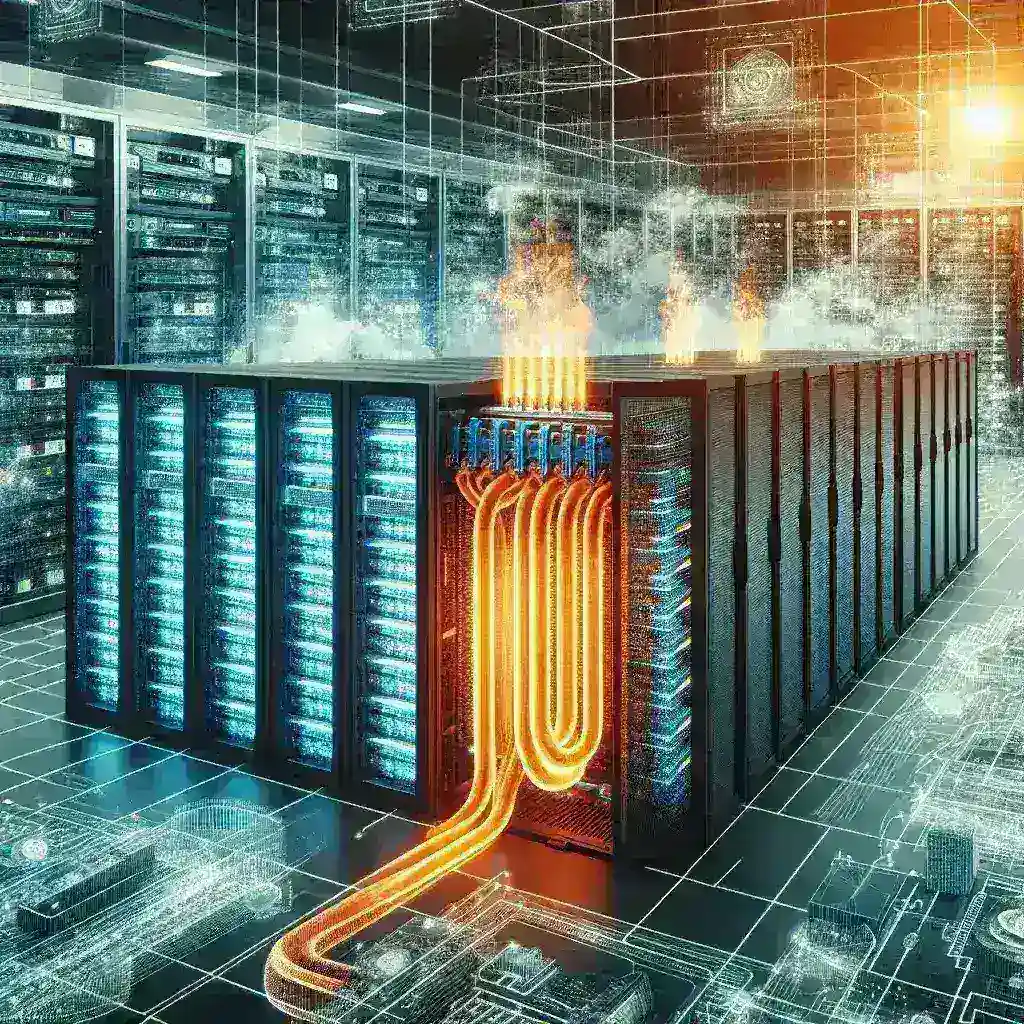Introduction
In the quest for sustainability, data centers—critical hubs for modern digital infrastructure—are under increasing scrutiny due to their substantial energy consumption and carbon emissions. With global data traffic projected to reach unprecedented levels, the urgency to mitigate environmental impact grows daily. One innovative solution gaining traction is the implementation of heat reuse systems. This article delves into how these systems can effectively lower the carbon footprint of data centers, paving the way for a greener future.
Understanding Heat Reuse Systems
Heat reuse systems are designed to capture and repurpose waste heat generated by data center operations. Traditionally, this excess heat is expelled into the environment, representing a lost opportunity for energy efficiency. By utilizing advanced technologies, data centers can convert this waste heat into a valuable resource, significantly enhancing their sustainability profile.
The Mechanisms of Heat Reuse
Heat reuse can be achieved through various mechanisms:
- Heat Exchangers: These devices transfer heat from one medium to another, allowing waste heat to warm water or air for other facility needs.
- District Heating: Excess heat can be funneled into district heating networks, supplying energy to nearby buildings and reducing reliance on fossil fuels.
- Heat Storage Systems: These systems can store excess heat for later use during peak demand periods, enhancing efficiency.
The Carbon Footprint of Data Centers
A recent report by the International Energy Agency (IEA) estimated that data centers were responsible for approximately 1% of global electricity consumption in 2022. As data consumption continues to rise, so too does the carbon footprint associated with data processing and storage. The environmental impact is compounded by the use of fossil fuels in energy generation, making it imperative for the industry to pursue sustainable practices.
Benefits of Implementing Heat Reuse Systems
Deploying heat reuse systems in data centers yields several benefits:
- Reduced Energy Costs: By harnessing waste heat, data centers can lower their energy bills, resulting in significant cost savings.
- Lower Carbon Emissions: Utilizing waste heat directly reduces the need for additional energy generation, thus lowering overall carbon emissions.
- Enhanced Public Image: Companies adopting sustainable practices position themselves as environmentally responsible, attracting eco-conscious consumers and investors.
Real-world Examples of Heat Reuse Systems
Several pioneering companies have successfully integrated heat reuse systems into their operations:
1. Microsoft’s Data Centers
Microsoft has been a forerunner in sustainable technology. Their data centers utilize a heat reuse system that captures excess heat to warm nearby buildings and facilities, thereby reducing energy consumption and greenhouse gas emissions.
2. Google’s Waste Heat Reutilization
Google has implemented an advanced cooling system that not only cools its servers but also repurposes the waste heat to support campus heating, showcasing a model for efficient energy use.
3. Equinix’s Green Initiatives
Equinix, a global data center provider, has invested in heat recovery systems that enable them to utilize excess heat for their heating and cooling needs, significantly cutting down their carbon footprint.
Challenges and Considerations
While the benefits are compelling, there are challenges that need to be addressed:
- Initial Investment: The upfront cost of implementing heat reuse systems can be high, though long-term savings often counterbalance this.
- Infrastructure Requirements: Existing data centers may require significant modifications to accommodate heat reuse technologies.
- Regulatory Barriers: Policies and regulations regarding energy use and carbon emissions can vary widely, impacting the feasibility of heat reuse systems.
Future Predictions for Data Center Sustainability
As awareness of climate issues grows, the demand for sustainable data center solutions is expected to increase. Analysts predict that:
- By 2030, a significant percentage of data centers will adopt heat reuse systems as part of their sustainability initiatives.
- Technological advancements will lead to more efficient heat recovery systems, reducing costs and enhancing utility.
- Regulatory frameworks will evolve to support and incentivize the adoption of energy-efficient practices.
Conclusion
Heat reuse systems present a promising avenue for reducing the carbon footprint of data centers. By capturing and repurposing waste heat, these systems not only enhance energy efficiency but also contribute to a more sustainable future for the tech industry. As companies navigate the challenges of implementation, the long-term benefits—both financial and environmental—make a compelling case for embracing this technology. The path forward is clear: the integration of heat reuse systems is not just a trend, but a necessity in the fight against climate change.
Call to Action
For data center operators and stakeholders, now is the time to explore the integration of heat reuse systems. By investing in these technologies, you can reduce your carbon footprint, lower operational costs, and position yourself as a leader in sustainability. Join the movement towards a greener future and make a significant impact in the realm of energy efficiency today!

